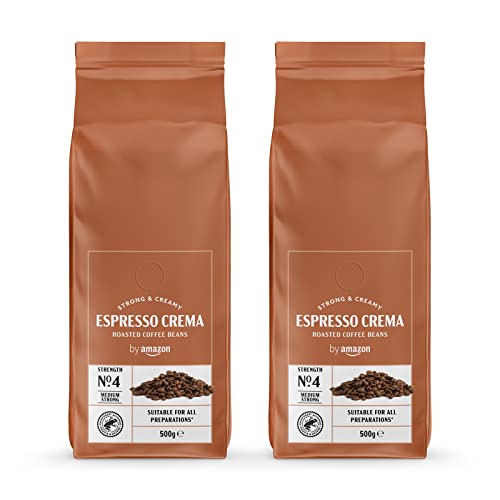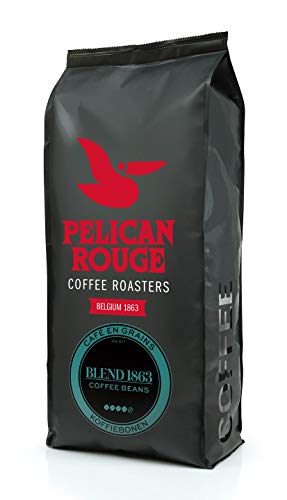10 Inspirational Images Of 1 Kg Of Coffee Beans
페이지 정보
작성자 Dominik 작성일24-07-12 12:26 조회29회 댓글0건본문
 How Many Cups Can You Make From 1 Kg of Coffee Beans?
How Many Cups Can You Make From 1 Kg of Coffee Beans? If you're a coffee lover or oversee coffee supplies in an office, you're likely to wonder how many cups of coffee can be made out of a kilogram of beans. A simple calculation, without taking in waste from spillage or dialling in the grinder will reveal that a kilo of beans can yield around 142 espresso shots in one shot.
If you're a coffee lover or oversee coffee supplies in an office, you're likely to wonder how many cups of coffee can be made out of a kilogram of beans. A simple calculation, without taking in waste from spillage or dialling in the grinder will reveal that a kilo of beans can yield around 142 espresso shots in one shot.Cost
You can save money by purchasing coffee in bulk. You will also enjoy an extra fresh, flavorful cup of coffee. It is essential to store the coffee properly to preserve its taste and texture. The best method to do this is to store it in an airtight container.
The price for 1 kilogram of coffee beans is dependent on the kind of coffee you purchase. If you purchase the whole beans, they are cheaper than pre-ground. You should also think about the amount of coffee you consume on a daily basis. The average coffee drinker can make 142 cups of single-serve espresso from one kilogram of beans.
There are many factors that contribute to the price of coffee beans, including shipping costs, warehouse storage fees customs fees, as well as profits made by the importer. These costs can add-up especially if the beans are purchased from a big retailer. The price of coffee can also fluctuate due to currency exchange rates.
The first coffee plantation was in Ethiopia where a goat herder was able to experience the energizing effects of the plant. Coffee cultivation spread throughout the world from Ethiopia. Today, it is grown in a variety of different regions, each producing unique flavours and characteristics. Arabica and Robusta are the most popular types.
When they roast, green coffee beans will lose between 15 to 18% of their initial weight. This is due to the fact that water contained in the coffee beans expands, which decreases their volume. A 1kg bag of coffee beans can contain approximately 8000 Solimo Coffee Beans 2 kg - Best Value Pack beans. The number of cups you can make from a kilo depends on the type of coffee bean and roasting style.
Assuming zero waste, a bag of 1kg of coffee beans of beans will yield 120-140 cups. The average espresso shot is 30ml and utilizes seven grams of ground coffee. If you're a two-cups-a-day coffee drinker, 1 kilogram of coffee beans will last about ten weeks.
Another aspect that influences the price of a kilo of coffee beans is the amount of coffee lost in the grinding process. This includes the grounds that are discarded from the grinder and the coffee that is spilled on the counter. These wastes could reduce the number cups you can make using one kilogram.
Quality
The quality of the coffee beans will determine how many cups of coffee you can prepare. The higher the grade is, the more flavor and a more intense taste. You should avoid expensive beans that are old and have lost their flavour. You should only purchase top-quality fresh coffee beans from a reputable supplier.
Ask questions regarding the quality of coffee when you shop for coffee beans. For instance, how the beans are handled and stored after harvesting can have a significant impact on their flavour and consistency.
Roasting beans are also influenced by the quality of the beans. The chemical reactions caused by the changes in temperature during roasting create the distinct flavors we associate with a good cup of coffee. If the beans are too stale or roasting isn't done properly, the quality of coffee will be ruined.
The type and amount caffeine content in the coffee may also affect its quality. You may need more coffee to achieve the desired effect If you prefer a stronger brew, while some people like to drink it less strong and less caffeinated. The amount of coffee you use is also influenced by grind size, the brewing method and the way you prepare it.
The option of purchasing coffee beans in bulk is a great option for your coffee experience and for your pocket. In addition to saving money, buying in bulk reduces the amount of waste generated. It also gives you the opportunity to try out new coffees and see what you like in your coffee. Additionally, the ability to test different grind sizes and brewing methods will increase your appreciation for coffee even more.
Variety
There is a wide variety of coffee beans available on the market, each with distinct aromas and flavors. The right beans are crucial for making the perfect cup of home-brewed coffee. It is also recommended to purchase your coffee from a roaster that is committed to fair trade and sustainable source. You can also pick organic or Rainforest Alliance certified coffee beans to support eco-friendly and ethical production.
The quality of the beans you pick will have a direct impact on the amount of coffee that you will end up with at the end of the day. If you're using an espresso machine, for example, you will have to make use of more coffee beans than you would if you were using filter. This is because the process of espresso requires a large amount of finely ground beans that need to be compressed into a small area. Additionally, the taste preference and brewing method will also play an important role in how much you will be able to get through.
Purchasing whole beans allows you to experiment with various grind sizes and brewing techniques. This ability to try new coffees can enhance your experience and helps you discover your own tastes. Bulk purchases reduce packaging waste which is good for the environment. This is because less containers and bags are needed to store one kilogram of coffee. Coffee grounds are a by-product of the brewing process and can be composted.
A kilo of coffee will yield between 55 and 100 cups depending on your personal preferences and brewing method. Look for the highest quality beans you can afford when you are shopping for coffee. Higher-end options offer superior flavor profiles and a range of choices, including single-origin and fair-trade beans. These higher-end beans are typically more expensive, however they offer a better overall value for your money. They are also often roast at lower temperatures to preserve the flavor of the bean.
Sustainability
Coffee beans are the seeds-bearing body of a coffee fruit. The fruit is yellow, red, or purple color with a thin skin and is composed of mostly seeds. The coffee bean is the seed within the fruit, and it contains two kinds of caffeine: theobromine as well as theanine. Theobromine is a stimulant, whereas theanine is a relaxing. When consumed, these two chemicals work together to create an euphoric state in the brain. The amount of caffeine in the cup of coffee is contingent on the method of brewing and the size of the grind. Espresso, for example, uses more beans than French press or drip coffee. The coffee brewing process also affects the amount of cups that can be made with 1 kg of beans.
A kilo of beans can yield between 55 and 100 cups of coffee dependent on the method you use to brew and personal preferences. A kilo of beans should last about five weeks, or about six mugs per day for an average person. It's important to remember that double espresso shots require twice the amount of coffee beans a regular one, so the number of beans is less.
To make coffee more sustainable The coffee industry is adopting various strategies. These include increasing the efficiency and productivity of coffee machines and reducing greenhouse gases (GHGs) during production, and increasing the carbon content of soil. The coffee industry has also created a variety of certification schemes that encourage sustainability. These include Fairtrade, Rainforest Alliance, and UTZ Certified. These certifications aid consumers in identifying coffee that is ethically and sustainably source.
Although coffee has a relatively small footprint on the environment however, the transportation and sourcing of coffee beans can also contribute to its global GHG footprint. About 15% of coffee's total GHG emissions are due to international transportation. This is reduced by reducing the use of agrochemicals during cultivation, using more efficient water heating systems and renewable energy in processing and roasting beans before exportation. Utilizing cargo ships instead of freight flights is a method to cut down on GHG emissions from the import and export of coffee.
댓글목록
등록된 댓글이 없습니다.

